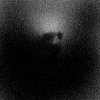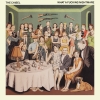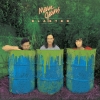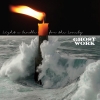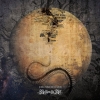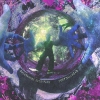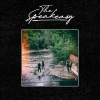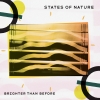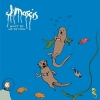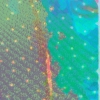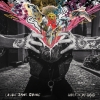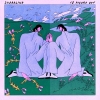Gig Reviews
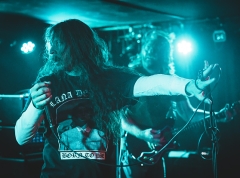
Cult Leader
Stengade, Copenhagen, DEN - 15/4
Album Reviews
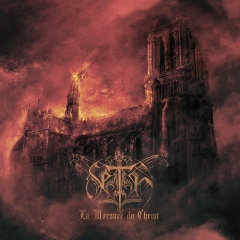
Seth
La Morsure du Christ
Written by: RUB on 20/05/2021 09:50:27
My, oh my, how my love for French metal has grown over the years. From my first true love Gojira more than a decade ago, I slowly started to understand the amount of talent and the rising number of bands worthy of praise coming from France. As ignorant as I once was, I didn’t even realize the potential of the scene back then — the black metal scene in particular, even though it has existed since the mid-‘90s. Whether they are from French Canada or from France itself, the number of bands putting out tremendous, extraordinary records has baffled me ever since discovering bands such as Regarde les Hommes Tomber, Blut Aus Nord, Forteresse, and one of the newer additions, Ferriterium. The latest band, however, to thoroughly grab my attention, are the black metallers of Seth, who, despite their rather unoriginal moniker, managed to turn some heads with the cover art for their latest outing “La Morsure du Christ” (The Bite of Christ). It depicts the burning Notre-Dame de Paris cathedral, and as such it leaves little to the imagination with regard to what sort of music hides beneath the surface — and I can only imagine the reception from their native populace when it was released on the second anniversary of the catastrophe. But then again, if there’s something I’ve learned about French black metal, and perhaps this is also the biggest reason for why it has quickly become a personal favourite scene of mine, is that there’s always something else, something special about the way these bands create their music. One thing should at least be clear: with artwork like this, the group has set the bar very high for what sort of music lies ahead.
Distant, symphonic synths, cupelled with classic tremolo and blastbeats, get the band’s first new album in eight years well underway. This aggressive, yet melodic piece instantly strikes a chord with my perception of the sound of French black metal; the production is crisp and packs striking melodies and beautiful rhythms in equal measure to menacing shrieks and aggressive riffing. The general composition of this titular track makes room for plenty of haunting atmosphere, which seems to be building up to something quite extraordinary. The inspiration from classic Norwegian black metal is of course working as a silver lining through the entire album, but the sound of French black metal provides just as strong a force to propel the album forward. What I especially like about this opening track is the sheer power behind every instrument. It feels like an absolute overload of aggressive sound, but at the same time, it also feels anything but random — and one has to pay close attention to every little detail. This sheer power is showcased in particular around the 01:40 mark, where the growling, haunting shriek of vocalist Saint Vincent leads the track further into chaotic oblivion. But then… what is that? Just shy of four minutes, all of that vitriol is abandoned for a quiet piano interlude, and as the soundscape starts to rebuild itself again, I have very little doubt in my doubt that this is not only going to be an epic and progressive journey of complete storytelling, but also a showcase of French metal excellence that might even rival the masterpiece that Ferriterium released earlier this same year.
As it was the case with Ferriterium, the lyrics on Seth’s latest offering are ‘sung’ entirely in French, which makes it harder for non-natives to truly capture the essence of the themes at hand. But one can still get some kind of a sense of what we’re dealing with. Again, I turn towards Google Translate just to receive a little insight into what the lyrics are actually about, and as the artwork suggests, the album expectedly revolves largely around anti-Christianity, and therefore also Satanism. The second track “Métal Noir” (the title of which simply translates into Black Metal) is perhaps the best one on the album, even if the bar remains extremely high throughout the record. Starting out as a beautiful and slow-paced piece, one immediately gets the feeling that it’s building towards something more extreme. Rightly so, because after one minute the blastbeats kick in — albeit without compromising the edge provided by the synths and classical instrumentation in the background. It shifts back and forth, and after some strings arrangements are added, it continues to develop into an otherworldly inferno of blastbeats and tremolo guitar against a distant backdrop of beautiful, artistic string section that produce a strange juxtaposition to the aural violence that is black metal. Even though the chorus is as extreme and cold as it is, these added elements make the aggressive parts sound that much more apparent — especially in the chorus, in which yelled backing vocals complete the soundscape to such an extent that I, too, feel like screaming at the top of my lungs despite not knowing what words are actually uttered. This is how you write timeless songs that will remain at the level of perfection for time immemorial.
The same can be said about the third track “Sacrifice de Sang”. The beauty of the track is a constant just beneath the surface, as though Sólstafir were the main inspiration for it, but as soon as the black metal elements once again kick in, the expression changes into something quite else. This combination of the beautiful and the ugly is what truly separates Seth from the rest of the pack, and it is thankfully a feature they make use of throughout the entire album. Whether it is ‘catchy’ hooks or rhythms, the sound remains grandiose throughout, playing on every aspect possible to render the soundscape even more magnificent. As can be said about the French black metal in general, the music does not just settle for sounding evil, bleak or ominous. No, it is always mixed with that something else that makes the sound and structure of the music that much more complex and mesmerising. This is an excellent trade for a genre as a whole, and the only downside is that it sometimes makes it difficult to separate the good, the great and the absolute top tier of bands operating in the genre. This track, which is another definitive highlight, thus takes the listener on yet another epic journey, one I sincerely hope will bring the music of Seth out to every fan of the genre.
I am no expert in poetry or anything of the sort, but I do find Seth’s approach to writing lyrics quite interesting nonetheless. They utilize French Alexandrine verses, and Saint Vincent definitely adds something special to the already magnificent musical landscape of Seth with his vocalisations. It all sounds quite artistic, yet never forced in any way. In fact, Seth utilises a lot of different elements in order to make their soundscapes more captivating and grandiose. Whether it is the already mentioned rhythm patterns or strings arrangements, they always seem to have the ability to bring something fresh to the table. Take the organs of “Hymne au Vampire (Acte III)” around the 2-minute mark for example: the keys have an almost ‘80s vibe about them, yet they still manage to sound just as natural as any other unique twist present on “La Morsure du Christ” and really cause the listener to pay attention.
So in conclusion then: does “La Morsure du Christ” live up to the high expectations the album cover managed to set for me? Well, if it was not already clear by now, I only have high praise to offer these Frenchmen’s latest creation. Likened to other album covers from bands like Burzum, Gorgoroth and Mayhem, all of which tend to harbour vivid imagery related to hatred of Christianity in particular, Seth continue on a long, historic line along one of the most central themes in black metal. Some might sardonically brand the seriousness of this sort of behaviour stemming from the classic Norwegian branch of the black metal genre in particular trve, dumb, or even childish — but it is hard to imagine anyone laughing when “La Morsure du Christ” is spinning. This album will be a pinnacle of reference for years to come, and just like Ferriterium, it is about as good as it gets in this genre. With only two original members left in Alsvid behind the drums and Heimoth on the keyboards and guitar, I am simply baffled at how this is not more noticeable in their song writing. Everything fits together to near-perfection, and I can only imagine what this revamped line-up will be capable of in the future.
Seth has clearly had a vivid idea of what to the sound of “La Morsure du Christ” should be like, and with the various neoclassical elements embedded into tracks like the aforementioned “Métal Noir”, it is obvious to me that the band has opted for something truly unique that, in my book, renders this effort a worthy candidate for album of the year. Using the burning Notre-Dame as a symbol for the downfall of Christianity and perhaps religion as a whole, the group ties the theme of “La Morsure du Christ” together in such a way that you are not just completely awestruck by the music, but perhaps also a little bit scared by the way in which it is presented. As was the case with the small handful of albums by French black metallers that I have reviewed and listened to over the last couple of years, you do not have to be able to understand French in order to admire these bands and their music — because even though you may not understand every little detail in the lyrics, the combined forces of the music itself and the vitriolic way the music is played tells its own story. There is thus absolutely no doubt in my mind that “La Morsure du Christ” belongs in the upper echelons of the black metal genre — not only this year, but even this entire decade and beyond.
Download: La Morsure du Christ, Métal Noir, Sacrifice de Sang, Hymne au Vampire (Acte III), Les Océans du Vide
For the fans of: Abigor, Blut Aus Nord, Ferriterium, Forteresse
Listen: Facebook
Release date 07.05.2021
Season of Mist
 Twitter
Twitter Facebook
Facebook